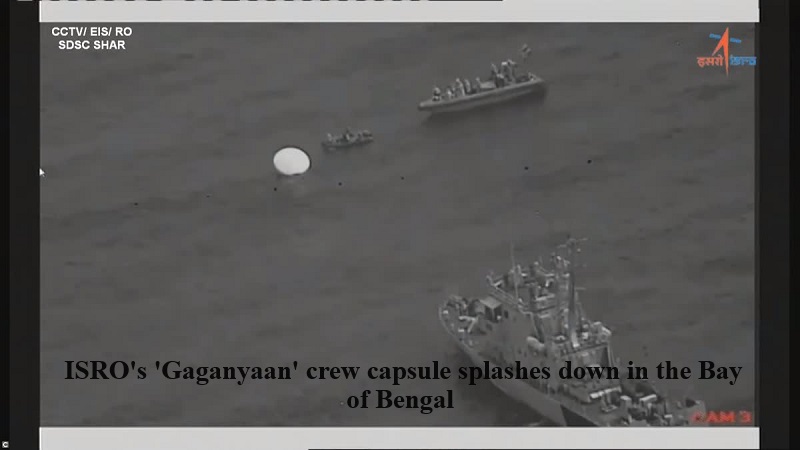
Around 8:10 am, the ‘Gaganyaan’ crew capsule from ISRO is scheduled to land in the Bay of Bengal, approximately 10 kilometers off the coast of the Indian Spaceport in Sriharikota. According to WION, two Indian ships, INS Shakti and SCI Saraswati, will be stationed at a safe distance to recover the empty capsule. INS Shakti is an Indian Navy fleet tanker, and SCI Saraswati is a multi-purpose support vessel. Both vessels are involved in the crucial recovery operation of the crew module. It’s worth noting that both ships have the capability to carry helicopters, providing aerial support to their primary missions.
Recovering and securing the crew module, which weighs over 4.5 tonnes, onto the ship’s deck is a challenging task that requires heavy-duty shipborne cranes. To address this, the Indian Navy and the Shipping Corporation of India have deployed these two large vessels for the operation.
INS Shakti is the Indian Navy’s fleet replenishment tanker, serving as a mobile fuel station and supply center for naval assets at sea. The vessel is equipped with a heavy-duty crane capable of lifting loads up to 30 tonnes. Weighing 27,500 tonnes, it’s one of the largest vessels operated by the Indian Navy. Replenishment tankers like INS Shakti allow the Navy to conduct missions far from their home shores.
The ISRO mission is unique and serves to test the systems required to rescue an astronaut capsule in the event of a rocket failure during flight. This mission is part of India’s ambitious Human Spaceflight program, ‘Gaganyaan.’ During ISRO’s ‘TV-D1’ test flight, a purpose-built rocket will be launched to an altitude slightly higher than that of passenger airliners. After 61 seconds, the rocket will reach an altitude of 11.9 kilometers and a speed of Mach 1.2 (1480 km/h), at which point the rocket will shut down as programmed.
The crew escape system will then be activated, and the top section of the rocket, including the escape system and the crew module, will eject itself higher and farther from the rocket. Around 90 seconds after liftoff, at an altitude of approximately 17 kilometers, the crew escape system and crew module will separate. While the rocket and escape system free-fall into the sea, the crew module will use multiple parachutes to gradually descend and splash down, around 10 kilometers from the spaceport’s shore.
In effect, three substantial aerospace components, each weighing several tonnes, will splash down at sea, a few kilometers from the Indian spaceport. This necessitates positioning both INS Shakti and SCI Saraswati at a safe distance. Once authorized, they will head to the crew module’s splashdown site and deploy swimmers and divers to secure the floating object before the crane completes the recovery. Since there are no berthing facilities near the spaceport, the vessels will offload the crew module at the Chennai port, located less than 80 kilometers from the spaceport.

Post Your Comments